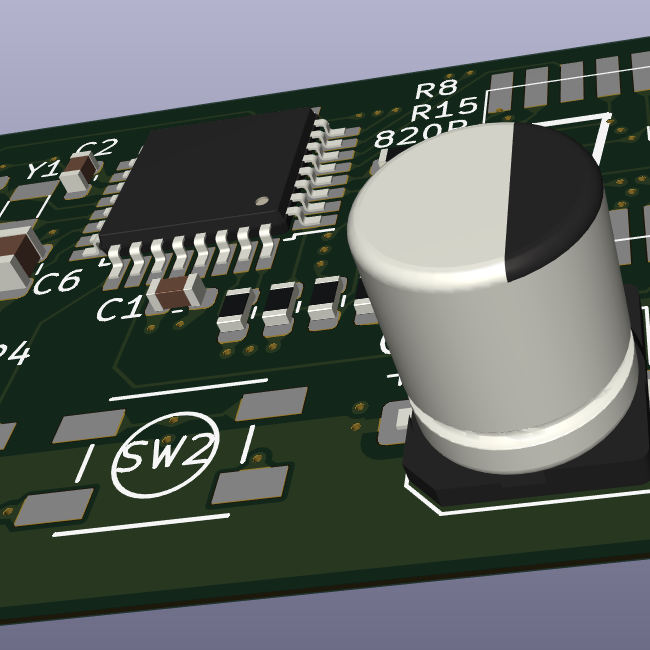My first lemmy account was on an instance called iusearchlinux.fyi then it just disappeared suddenly and without explanation (admin probably burnt out). Anyway, it was nice to be able to tell people i use arch linux without actually having to tell them. I miss that instance
I made the icy-nord and icy-nord-darker themes.
@promitheas:matrix.org
- 13 Posts
- 60 Comments
It do be like that :p

 5·10 days ago
5·10 days agoshocked pikachu face
“Why should we give them back? We managed to steal them so they were obviously not safe in your hands. No, no, we’ll keep them here for safe keeping.”

 1·2 months ago
1·2 months agoThese 2 boards are part of my circuit, which I want to move from my breadboard to a PCB, so I need a way to attach these boards to the PCB. Due to the fact that I want the ability to re-use these boards in other projects, and also not have them stick up from the PCB vertically, I decided to go with right-angled headers so that I have both of these features (easy plugging in/unplugging of the boards from the final PCB, and a more compact final design).
However since they will need to hang over some degree you need to look at the 2d drawing and make sure the right angle header pins are long enough to mate to the matching component on the board.
By this do you mean I need to make sure the pins on the boards will fit in the hole of the headers? I was under the impression that pin length is quite standard, much like pin separation. I believe mine are 2.54 mm because they fit nicely in my arduino headers, as well as the breadboard. I’d assume the length is also standardised. Please correct me if Im wrong.
If you are sending the board out to be made at a shop you will need to define these features and tolerances in the manufacturing layer that will export as part of the gerber file and possibly provide a 2d drawing.
By this I assume you mean that I need to make sure the boards will clear any other components on the PCB? I’ve been getting through this playlist: https://www.youtube.com/watch?v=ZHH4G_EWhm0&list=PL3bNyZYHcRSUhUXUt51W6nKvxx2ORvUQB&index=4&t=2s
as I go through each step of the process. When he gets to the point about designing the PCB I’ll see if he mentions how to make sure I have enough clearance for all my components, otherwise I guess I’ll look for other videos explaining how to do this.

 1·2 months ago
1·2 months agoPretty much yea thats what I want to do, but I havent started designing the PCB yet, as I wasnt sure how to create the footprints for these components.
If I’m understanding you correctly, in this case I need to kind of “work backwards” and instead of creating the footprint for the board and add pins to it, I need to create the footprint for the headers I will use, and simply mark out a region which the board will sit on so that that area is free from other components?
 2·3 months ago
2·3 months agoThanks! Ill take some time to look into what you said and try to really understand it, but if I need some help I’ll ask you. As for how many splits a TUI might have, I dont know because I need it to be quite general so that others can use it for their own purposes. Me personally and for this specific project, Ill mostly need a bunch of columns (like blue and green in step 2) as well as the “special” windows, for my application. I’m trying to make a trello/kanban style app with ncurses and C.
This is exactly how it is. You set up your entry level filters for your desired fields in linked, and get the notifications! (EXCITEMENT)
Turns out theyre entry level jobs requiring at least 2 years experience in the field…
A few guys at my work actually just asled us what we wanted from the cafeteriawhen we were doing long fixes on their laptops (I work in a uni)
Though soon to no longer be IT, i guarantee that if you bring them cookies and coffee theyll start to love you :)

 1·5 months ago
1·5 months agodeleted by creator

 2·6 months ago
2·6 months ago- Why use bottles rather than lutris? Whats their difference? Im asking because the one time I tried using bottles I dont think I managed to get it to work with whatever it was I was trying to install.
- Ive never heard of portproton, but it looks like it does essentially the same thing as if you install through the steam client as a non-steam game using proton (?). If thats the case, why use it over any of the other options?
Thanks

 7·6 months ago
7·6 months agoCheck out stremio
What have you done? What have you permitted?
Honestly that sounds horrible. Women scientiss?!? Whatever will they come up with next

 1·7 months ago
1·7 months agoThanks for the clarification! As I said, this is my thesis project for my BSc in Computer Science, but I’m definitely considering a more electronics focused masters, especially given the fact I’m already searching for a job in the field of embedded systems/low level stuff. Might be a good piece of paper to have in the future :)

 1·7 months ago
1·7 months agoThanks, I just submitted a new order for a kit of assorted ceramic capacitors. The comments in this post have been really helpful with regards to the capacitor question, I feel I understand it more now. You people are lovely :)

 1·7 months ago
1·7 months agoThanks it actually was quite helpful to understand why I need to use such a capacitor for my chips! (Until towards the end he started getting really deep into it and my eyes glazed over)
Am I correct in assuming that my project and the chips I use do not really require me to put 3 or 4 different value capacitors in parallel instead of just one? Also, he mentions that its a good idea to use this technique on all chips, so would there be a downside to me placing a (or more) capacitor on the Vcc pin of all 3 of my chips (RTC, LCD display, Bluetooth) even though their datasheets might not specifically mention requiring them? Basically, if I have the capacitors, is there a reason to not put a decoupling capacitor on the Vcc pin of any chip in your circuit?

 1·7 months ago
1·7 months agoAs for the RTC’s 32kHz clock as you can see from my diagram I didn’t connect it to anything. I was under the impression that it was unnecessary for my purpose after looking at the datasheet. Am I wrong?







Oh i didnt know about this. Where did you read this, id like to see if theres more info?